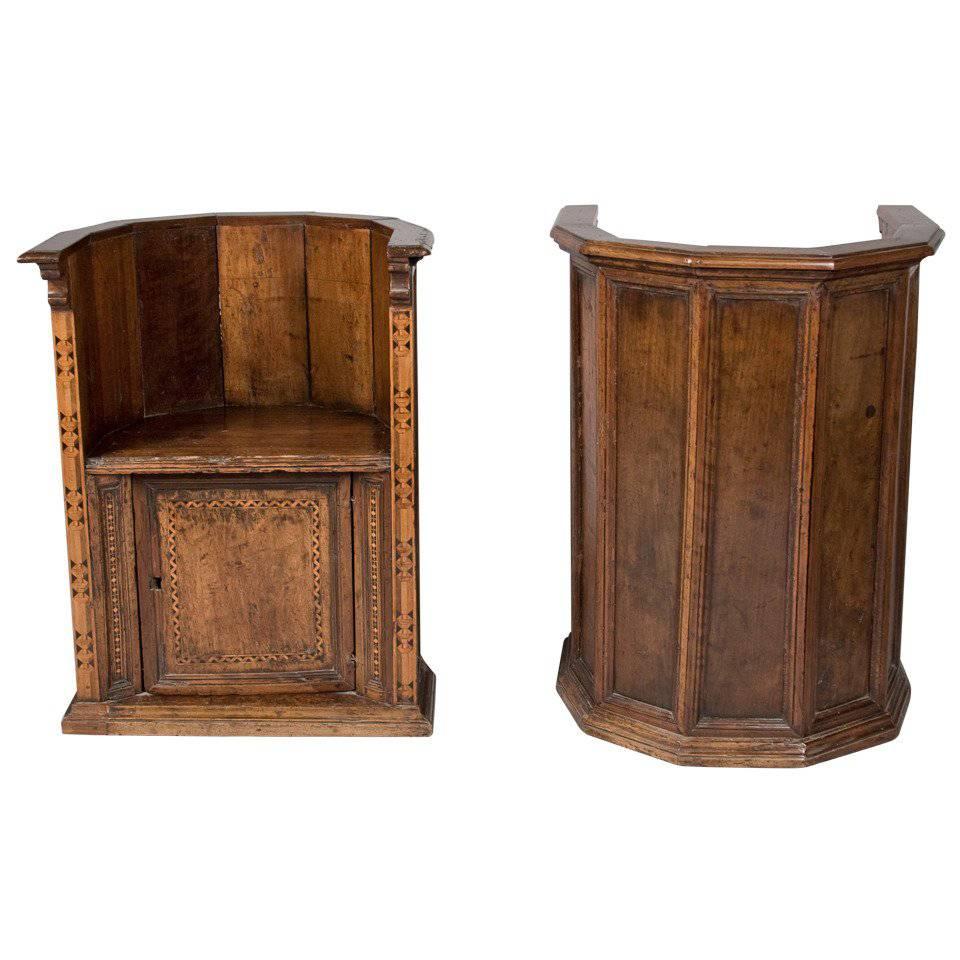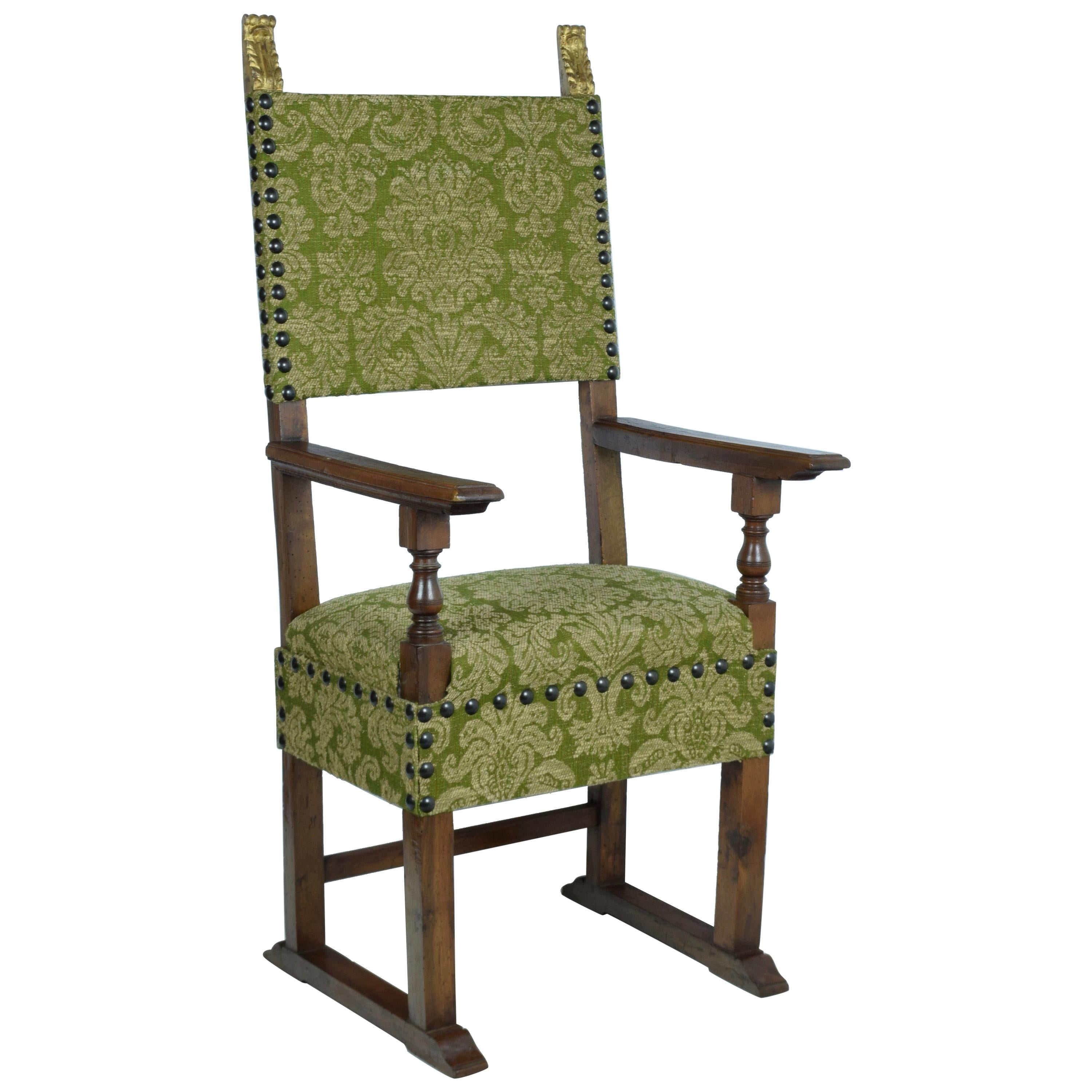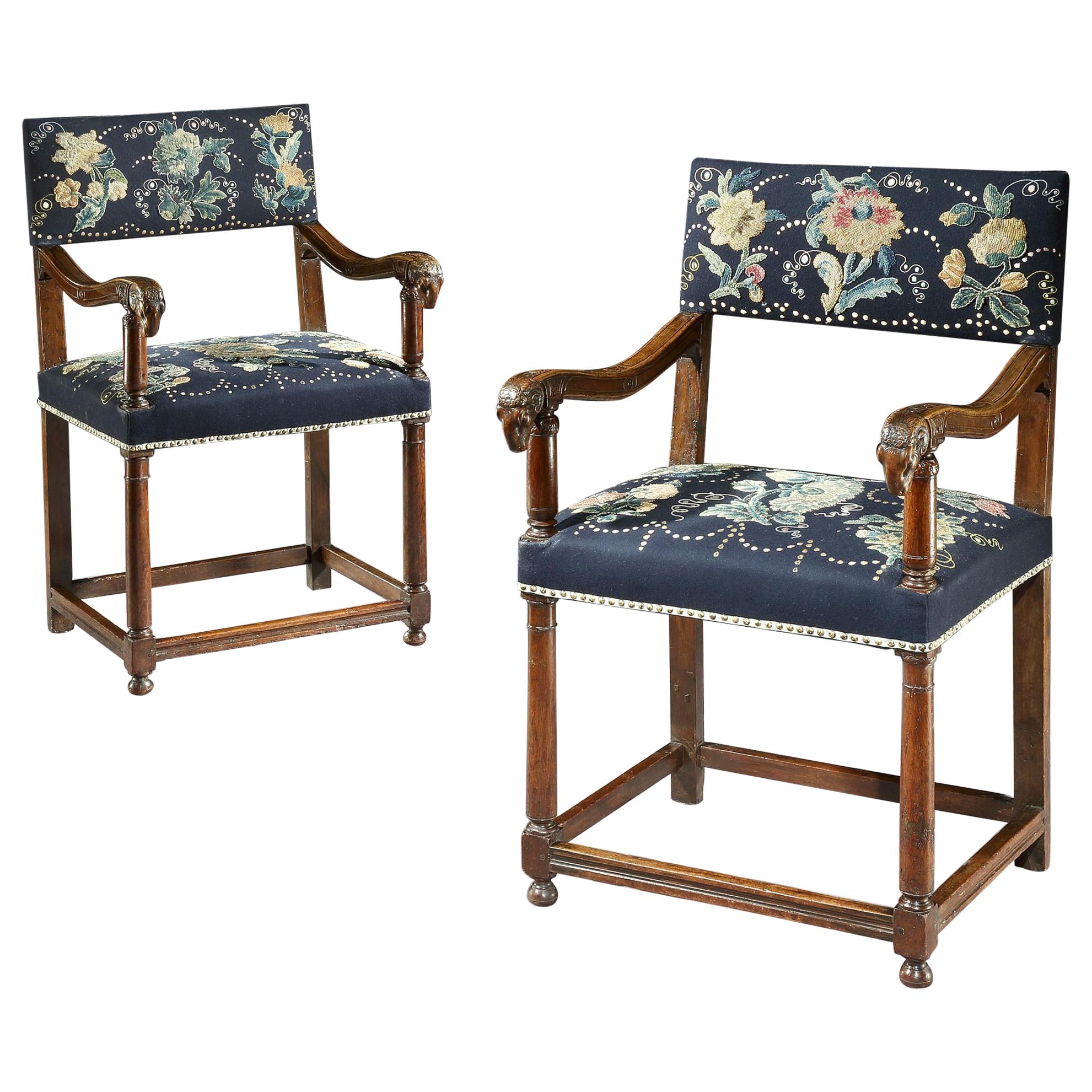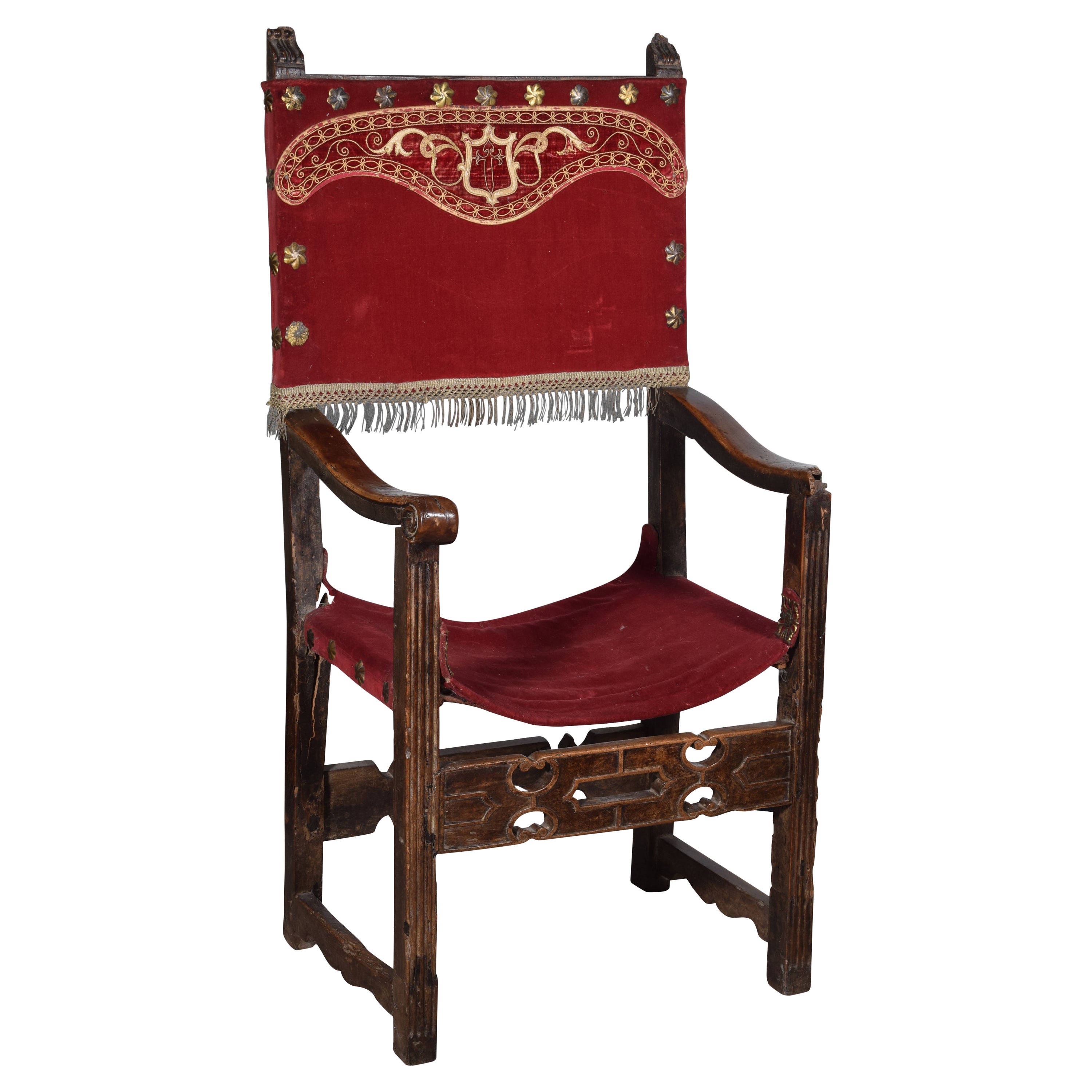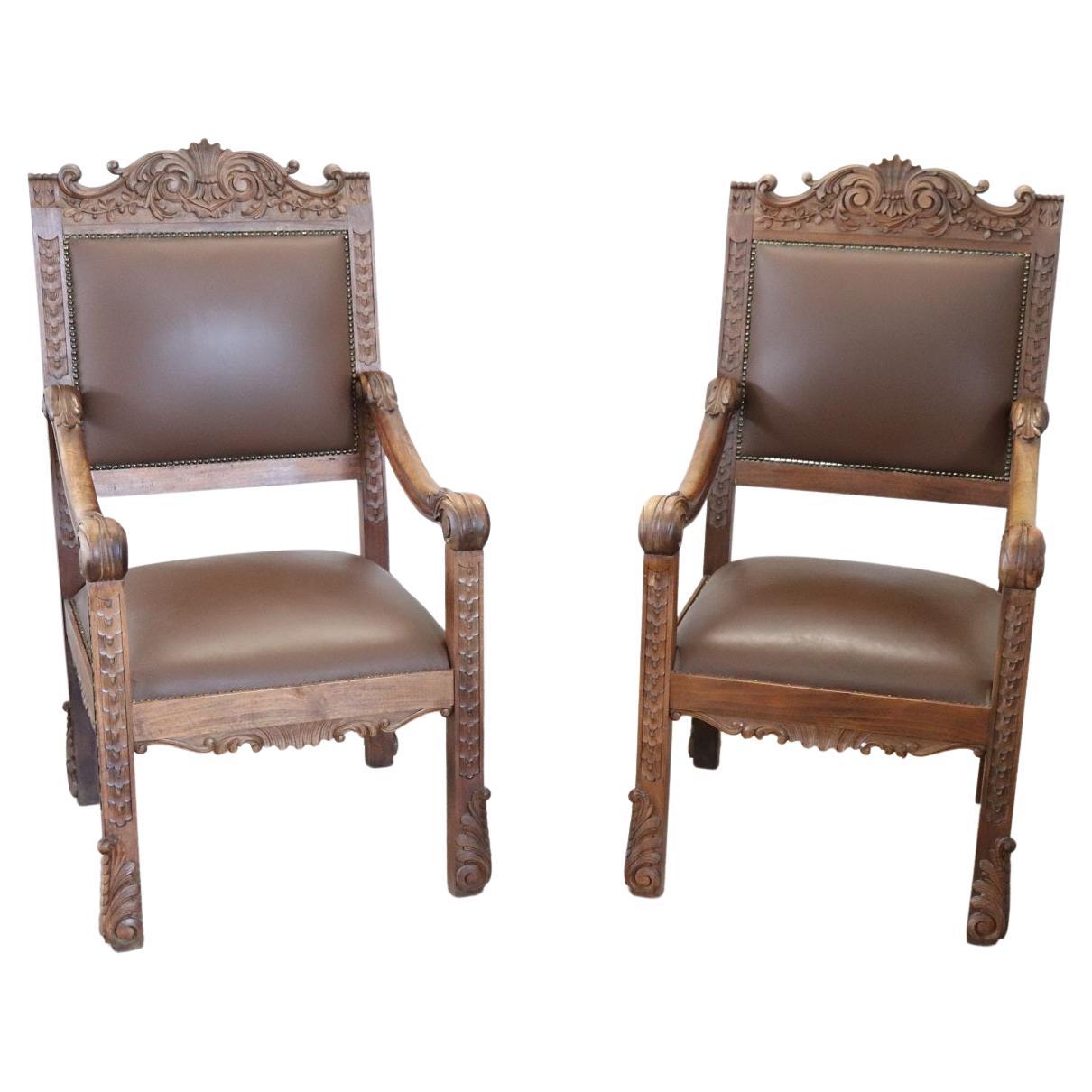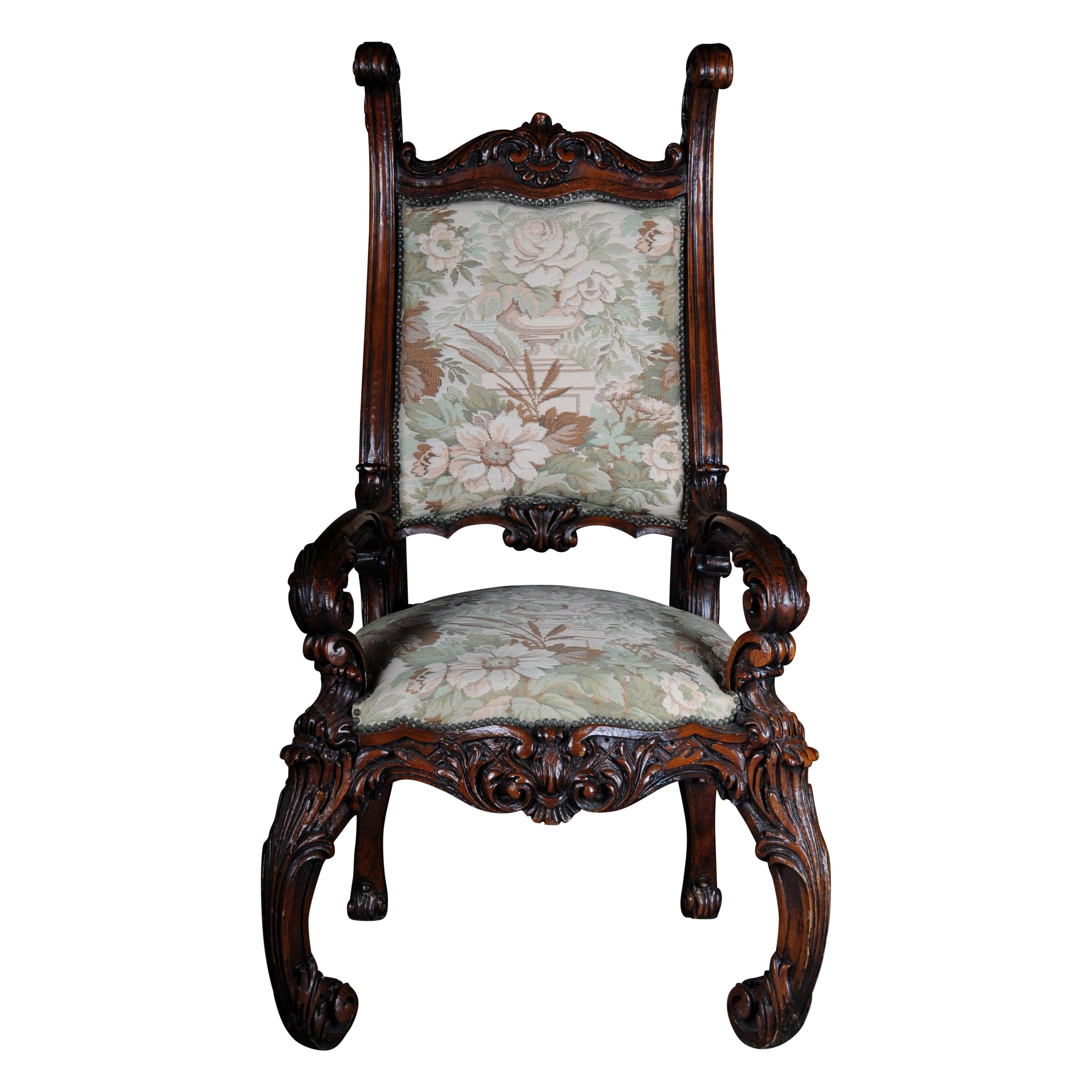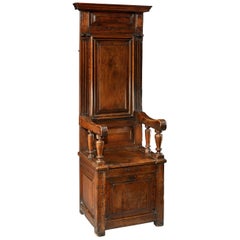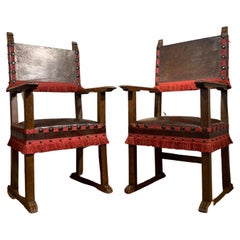
Late 16th Century, Couple Af Walnut Thrones
View Similar Items
Want more images or videos?
Request additional images or videos from the seller
1 of 11
Late 16th Century, Couple Af Walnut Thrones
About the Item
- Dimensions:Height: 48.43 in (123 cm)Width: 24.02 in (61 cm)Depth: 17.33 in (44 cm)
- Sold As:Set of 2
- Materials and Techniques:
- Place of Origin:
- Period:15th Century and Earlier
- Date of Manufacture:1570
- Condition:Minor losses. Minor fading.
- Seller Location:Firenze, IT
- Reference Number:1stDibs: LU7189231785732
About the Seller
5.0
Vetted Seller
These experienced sellers undergo a comprehensive evaluation by our team of in-house experts.
1stDibs seller since 2022
12 sales on 1stDibs
Typical response time: 13 hours
More From This SellerView All
- Late 18th Century Couple of Piedmont ArmchairsLocated in Firenze, FIBeautiful pair of neoclassical Provençal style armchairs. Painted in lean tempera in shades of blue, highlighted in gold and carved. In good condition, recently renewed padding and u...Category
Antique Late 18th Century Italian Armchairs
MaterialsWood
$4,172 / set - 16th Century Tuscany Walnut ConsolleLocated in Firenze, FIBeautiful console in solid walnut, top with owl beak profile on two supports carved with plant motifs on feral feet. Used as a small altar, of contained dimensions. Florentine manufa...Category
Antique 16th Century Italian Console Tables
MaterialsWalnut
- Florence, 16th Century Couple of Bronze Candlesticks BasesLocated in Firenze, FIBeautiful pair of bases for church candlesticks in burnished bronze, baluster-shaped with pods, triangular base with Cherub head details. Bases weighted ...Category
Antique 16th Century Torchères
MaterialsBronze
- Mid-19th Century Couple Af Small ConsollesLocated in Firenze, FIBeautiful pair of wall consoles supported by a winged fantastic animal with one leg made of carved and painted ivory-colored wood with pure gold leaf highlights. The use of these pa...Category
Antique Mid-19th Century Italian Console Tables
MaterialsWood
- Late 16th Century Siena Sacristy Chest of DrawerLocated in Firenze, FIBeautiful small chest of drawers with four drawers in carved walnut with tiles both on the drawers and on the sides. Typical Tuscan cabinet-making from the end of the 16th century, ...Category
Antique 16th Century Italian Commodes and Chests of Drawers
MaterialsWalnut
- 16th CENTURY GUARD'S STOOLLocated in Firenze, FITypical stool with backrest and curved legs in solid walnut wood with dark patina. This type of bench is used in guard posts, for this reason the seat is small and uncomfortable, to ...Category
Antique 16th Century Italian Renaissance Stools
MaterialsWood, Walnut
You May Also Like
- Cathedra or Throne Chair, Late 16th Century, French Second Renaissance, WalnutLocated in BUNGAY, SUFFOLKA moulded cornice sits above the high, panelled back with fluting and applied roundels. The later, metal pin on the left edge releases the central, moulded panel in the back which retains its original hinges. When the pin is removed the panel can be lowered, revealing a large area behind. The scroll arms are supported by tapering turnings which can be compared with mid-16th century benches of the nave such as those in the churches in Gerberoy and Coivrel which are in Oise, the Piccardie region of Frances. The panelled, box seat has later 18th century hinges...Category
Antique 16th Century French Renaissance Armchairs
MaterialsWalnut
- Later 16th to Early 17th Century Italian Renaissance Walnut ChairsLocated in San Francisco, CAA pair of Italian Renaissance walnut chairs. Pozzetto, Ref & quot;Volpi Collection- Art Treasures of the Davanzati & quot; These chai...Category
Antique 17th Century Italian Renaissance Armchairs
MaterialsWalnut
$8,900 Sale Price / set68% Off - Italian Armchair in Carved Walnut Late 16th Century Covered in Green DamaskLocated in Prato, ITFirenze, Italy, late 16th century Restored New padding with green damask Dimensions: W66 x D63 x H140 cm Reference bibliography: Alvar Gonzalez-Palacios, IL MOBILE NEI SECOLI, ...Category
Antique 16th Century Italian Armchairs
MaterialsWalnut
- Pair of Walnut Armchairs, Late 16th Century, French Renaissance, with Ram Mask CLocated in BUNGAY, SUFFOLK"This rare pair of upholstered open armchairs relate to examples in museum collections in France, the USA and the UK. Few pieces of Renaissance furniture featuring ram’s head motif arm terminals survive as the chairs would have been in the ownership of the elite symbolising leadership and authority. The condition of these armchairs reflects their age and use and they have a rich colour and lustrous patina. The form of these chairs is characteristic of a stereotypical Renaissance model. The upholstered section of the backs are upholstered in wool with applied 17th century floral needlework faced with gilded studs and supported by square section uprights. The channelled tablet and stylised rosette incised curved arms terminate in acanthus capped carved rams' masks and are supported by column turned uprights headed by an entrelac collar. The ram is a symbol of leadership and authority and it also determination, action, initiative, and Aries, the first sign of the Zodiac. The seats are upholstered in wool with applied 17th century needlework faced with gilded studs and supported by tapering column/ring turned front legs and square section back legs. Some of the stretchers with moulded detailing. Standing on front ball feet. Exceptional original colour and patina. Henri II 1550-60. Condition: The chairs are both sturdy with exceptional colour and patina. One armchair with a splice on the rhs back leg and replaced but period front and lhs stretcher both bearing old nail marks, two other replaced stretchers and the back uprights bearing old nail marks indicating that they were upholstered at some point. The other armchair with an old repair to a break in the right back leg and an old patch near the end of the leg, replaced but period back and lhs stretcher, small patch to bottom of lhs arm where it meets the support. Old worm marks and some losses. Considering the age of the armchairs, these repairs and replacements are not unusual and consistent with the repairs on the related armchairs in museum collections. They suggest that the chairs either fell backwards at some point or someone leant back while sitting in them. Back Height 107cm, 42in, Seat Height 59.5cm, 23½in Width 60cm, 23½ in, Seat 59cm, 23¼in Depth including arm 59cm, 23¼in, Seat 49cm, 19¼in Provenance: Deaccessioned by The National Galleries of Scotland Bearing an old transport label from Alain Moatti (French architect) to Mrs Katz, London Literature: Related to : There are comparable armchairs in international museum collections dated to the second half of the 16th century. Most share the following characteristics with the above pair, the form, the ram's mask carved to the end of each arm, the curvilinear outline of the arm rests, the ring turned front legs as well as the plain square section back legs and plain stretchers. 1. Two stained glass windows...Category
Antique 16th Century French Renaissance Armchairs
MaterialsWalnut
- Friar armchair (frailero). Walnut wood, textile. Spain, 16th century.Located in Madrid, ESFriar armchair. Walnut wood, textile, metal. Spain, 16th century. Has defects. Armchair with arms and high back of the type known as “frailero”, which has a textile upholstery with...Category
Antique 16th Century Spanish Renaissance Armchairs
MaterialsMetal, Other
- 19th Century Italian Walnut Throne ChairLocated in Los Angeles, CASingle 19th century Italian finely carved walnut throne chair with mohair fabric.Category
Antique 19th Century Italian Armchairs
MaterialsGold Leaf

